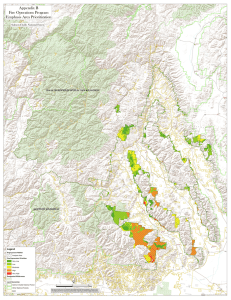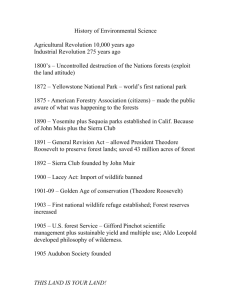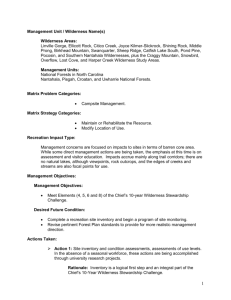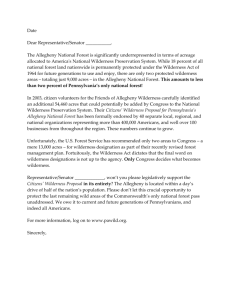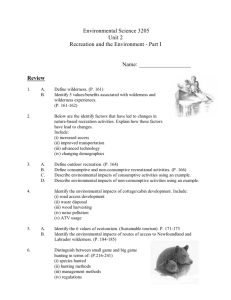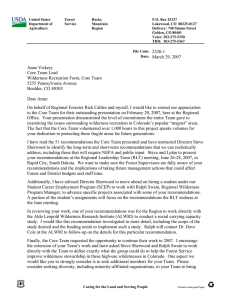Wilderness Information Management * Definitions & Acronyms
advertisement
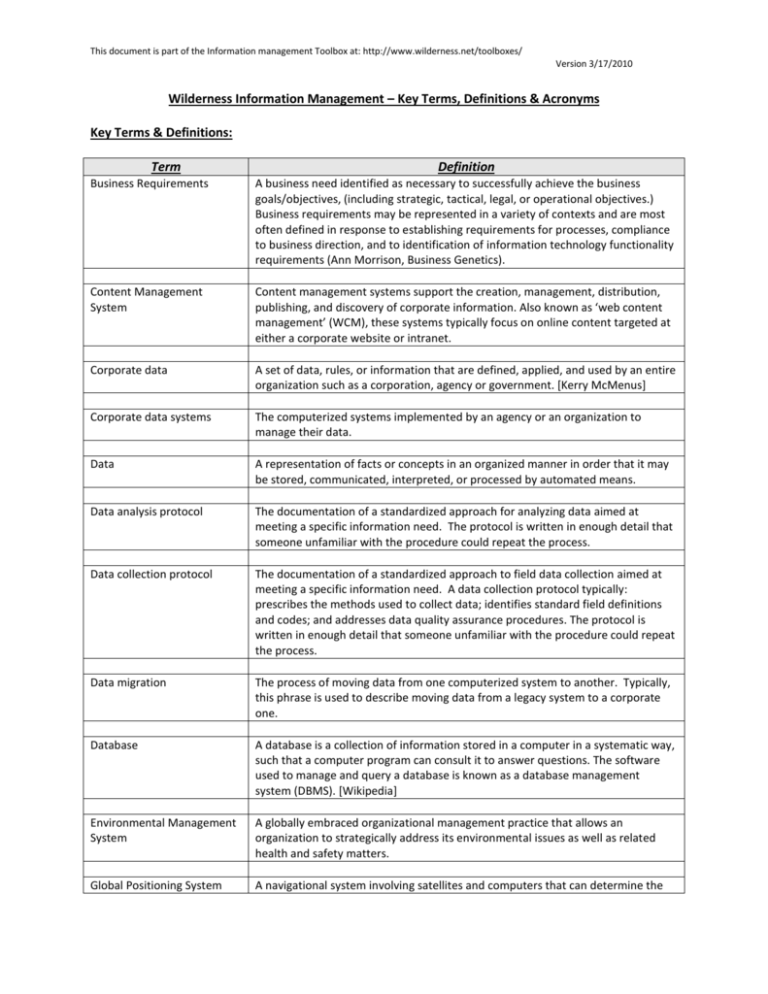
This document is part of the Information management Toolbox at: http://www.wilderness.net/toolboxes/ Version 3/17/2010 Wilderness Information Management – Key Terms, Definitions & Acronyms Key Terms & Definitions: Term Definition Business Requirements A business need identified as necessary to successfully achieve the business goals/objectives, (including strategic, tactical, legal, or operational objectives.) Business requirements may be represented in a variety of contexts and are most often defined in response to establishing requirements for processes, compliance to business direction, and to identification of information technology functionality requirements (Ann Morrison, Business Genetics). Content Management System Content management systems support the creation, management, distribution, publishing, and discovery of corporate information. Also known as ‘web content management’ (WCM), these systems typically focus on online content targeted at either a corporate website or intranet. Corporate data A set of data, rules, or information that are defined, applied, and used by an entire organization such as a corporation, agency or government. [Kerry McMenus] Corporate data systems The computerized systems implemented by an agency or an organization to manage their data. Data A representation of facts or concepts in an organized manner in order that it may be stored, communicated, interpreted, or processed by automated means. Data analysis protocol The documentation of a standardized approach for analyzing data aimed at meeting a specific information need. The protocol is written in enough detail that someone unfamiliar with the procedure could repeat the process. Data collection protocol The documentation of a standardized approach to field data collection aimed at meeting a specific information need. A data collection protocol typically: prescribes the methods used to collect data; identifies standard field definitions and codes; and addresses data quality assurance procedures. The protocol is written in enough detail that someone unfamiliar with the procedure could repeat the process. Data migration The process of moving data from one computerized system to another. Typically, this phrase is used to describe moving data from a legacy system to a corporate one. Database A database is a collection of information stored in a computer in a systematic way, such that a computer program can consult it to answer questions. The software used to manage and query a database is known as a database management system (DBMS). [Wikipedia] Environmental Management System A globally embraced organizational management practice that allows an organization to strategically address its environmental issues as well as related health and safety matters. Global Positioning System A navigational system involving satellites and computers that can determine the Version 3/17/2010 Term Definition (GPS) latitude and longitude of a receiver on Earth by computing the time difference for signals from different satellites to reach the receiver Information Information is the result of processing, manipulating and organizing data in a way that adds to the knowledge of the person receiving it. [Oracle Glossary of Terms] Information management The management of information resources, including data, applications and technology, to provide complete, accurate and sharable information in a format, and within a timeframe, that is useful to people. Information needs assessment A structured approach for determining data collection, storage and analysis needs by first identifying and prioritizing local management requirements. Inventory The gathering of data needed for analyses and evaluation of the status or condition of a specific universe or area of concern. [Resource Conservation Glossary] Legacy data Critical data stored outside of an organization’s corporate data systems. Meta-data Information or documentation about data. A data dictionary contains metadata, rather than the physical data itself. [Committee of Scientists] Monitoring A systematic process of collecting information to evaluate changes in actions, conditions, and relationships over time and space relative to a predetermined standard or expected norm. Personal Data Recorder (PDR) A small mobile hand-held device that provides computing and information storage and retrieval capabilities for personal and business use. Also known as a “PDA” or Personal Data Assistant. Quality assurance The total integrated program for ensuring that the uncertainties inherent in inventory and monitoring data are known and do not exceed acceptable magnitudes, within a stated level of confidence. Quality control The routine application of prescribed field and office procedures to reduce random and systematic errors and ensure data are generated with known and acceptable performance limits. Protocol A documented set of rules or instructions pertaining to the collection, analysis, or interpretation of data or information. Standards Criteria for desirable or tolerable conditions, or a statement or demonstration representing conditions of a job done properly. Standards show how well something should be done, rather than what should be done. Technical guide The documentation for established resource inventory and monitoring methods and terminology that tier off the Forest Service Handbook. Version 3/17/2010 Acronyms: Acronym 10YWSC CBT CDA CIO CMS EMC EMS FACTS FHM FIA GPRA GPS GSTC I&M INA Infra-WILD Infra-VUPS IRB IT LAC MRDG MTDC NRIS NRM NRRS NSRE NVUM NWPS OMB PDR RHR RSAC WAG WCM WIMST WWSR Definition 10-Year Wilderness Stewardship Challenge Computer Based Training Congressionally Designated Area Chief Information Officer Content Management System Ecosystem Management Coordination (Staff) Environmental Management System Forest Service Activity Tracking System Forest Health Monitoring Forest Inventory & Analysis Government Performance Results Act Global Position System Geospatial Service and Technology Center Inventory & Monitoring Information Needs Assessment Infra-Wilderness (module) Infra-Visitor Use Permit System (module) Information Resources Board Information Technology Limits of Acceptable Change Minimum Requirements Decision Guide Missoula Technology & Development Center Natural Resource Information System Natural Resource Manager National Recreation Reservation Service National Survey on Recreation and the Environment National Visitor Use Monitoring National Wilderness Preservation System Office of Management and Budget Personal Data Recorder Recreation and Heritage Resources (Staff) Remote Sensing Application Center Wilderness Advisory Group Wilderness Character Monitoring Wilderness Information Management Steering Team Wilderness & Wild and Scenic River (Staff)

